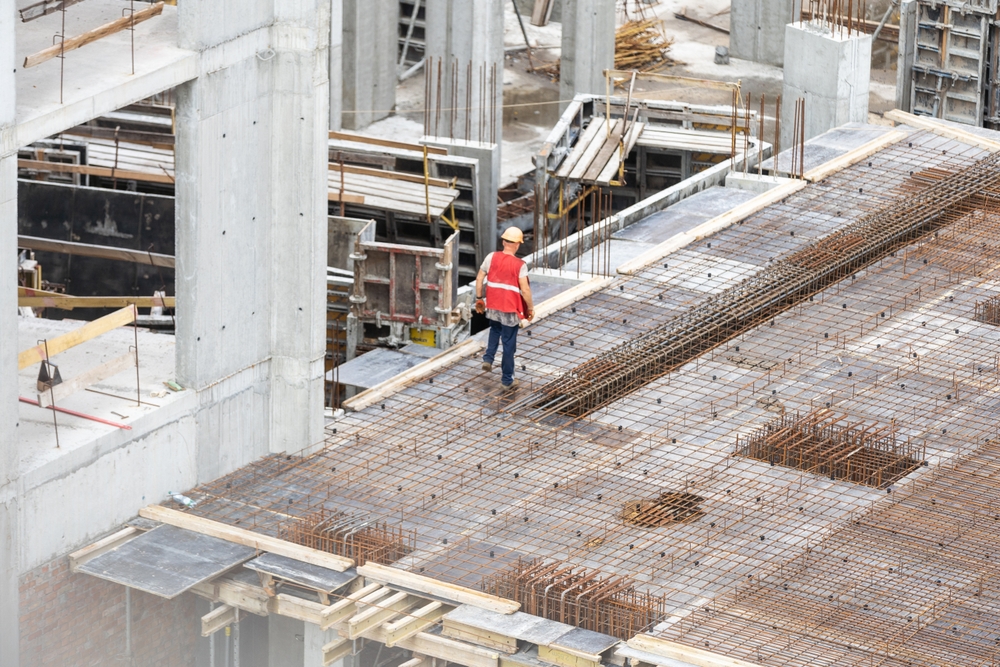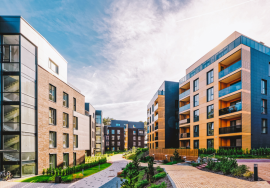The Role of Building Technologies in Energy-Efficient Homes
The Role of Building Technologies in Energy-Efficient Homes

As the demand for environmentally friendly and sustainable living continues to grow, energy-efficient homes are becoming a priority in the construction and real estate industries. Building technologies play a pivotal role in shaping these homes, improving energy efficiency, reducing carbon footprints, and creating healthier living environments. This blog will explore how modern building technologies contribute to the creation of energy-efficient homes and highlight their benefits for homeowners and the environment.
The Importance of Energy Efficiency in Homes
Energy-efficient homes are designed to reduce the consumption of energy while maintaining or improving the comfort, functionality, and aesthetics of the home. By using less energy, these homes not only lower utility bills for homeowners but also help to decrease greenhouse gas emissions, promoting a healthier planet.
Key Building Technologies for Energy Efficiency
1. Smart Home Automation
Smart home automation systems are among the most popular building technologies used to improve energy efficiency. These systems allow homeowners to control various aspects of their homes remotely, such as lighting, heating, and cooling, through smartphones or other devices. Automated thermostats, smart lighting, and energy-efficient appliances all work together to reduce unnecessary energy use, making it easier to maintain an energy-efficient household.
- Example: Smart thermostats, like the Nest Thermostat, learn homeowners’ schedules and automatically adjust temperatures for optimal energy savings. By reducing heating and cooling when it’s not needed, homeowners can save up to 10-12% on energy bills.
2. Energy-Efficient Windows and Insulation
One of the most critical components of an energy-efficient home is its ability to maintain a stable indoor temperature. Energy-efficient windows and proper insulation are crucial technologies that prevent heat loss in the winter and reduce heat gain in the summer. Double or triple-pane windows, low-emissivity (low-E) coatings, and insulated frames work together to keep homes comfortable and reduce the load on heating and cooling systems.
- Example: Low-E windows reflect heat back into the home during the winter and block harmful UV rays in the summer, enhancing energy efficiency year-round.

3. Solar Power Integration
Solar energy is one of the most sustainable and cost-effective sources of energy available today. Building technologies that integrate solar panels into homes enable homeowners to generate clean electricity from the sun, significantly reducing reliance on traditional energy sources. Solar-powered homes not only lower energy bills but can also contribute to energy independence and environmental sustainability.
- Example: Solar photovoltaic (PV) panels convert sunlight into electricity, allowing homeowners to power their homes with renewable energy, reduce utility bills, and even sell excess power back to the grid.
Benefits of Energy-Efficient Building Technologies
4. Reduced Energy Bills
The primary benefit of energy-efficient building technologies is the significant reduction in energy costs. By optimizing energy usage, homeowners can save hundreds or even thousands of dollars annually on utility bills. Smart technologies, energy-efficient appliances, and solar power solutions ensure that homes consume only the energy they need, reducing waste and cutting costs.
5. Increased Property Value
Energy-efficient homes are becoming increasingly popular in the real estate market due to the long-term savings and environmental benefits they offer. Homes with energy-efficient technologies, such as smart home systems, solar panels, and high-performance windows, often have higher property values and are more attractive to eco-conscious buyers.
6. Environmental Sustainability
By reducing energy consumption and utilizing renewable energy sources, energy-efficient homes help decrease the carbon footprint of residential buildings. This contribution to environmental sustainability is critical in the global effort to combat climate change. Homeowners who invest in energy-efficient technologies are playing a key role in promoting greener living and reducing their environmental impact.
The Future of Energy-Efficient Homes
7. Advanced Energy Storage Systems
One of the challenges of renewable energy sources, such as solar power, is the intermittency of energy production. To overcome this, advanced energy storage systems, like home batteries, are becoming essential components of energy-efficient homes. These systems store excess energy generated during peak production times, allowing homeowners to use it later when energy demand is high or during power outages.
- Example: Tesla Powerwall, a popular home battery system, stores excess solar energy, enabling homeowners to use renewable energy at night or during cloudy days, maximizing their energy efficiency.
8. Building Envelope Innovations
The building envelope – which includes walls, roofs, windows, and doors – plays a vital role in determining the energy efficiency of a home. Advanced building technologies are continually improving insulation materials, air-sealing techniques, and window performance, ensuring that homes are more energy-efficient and sustainable. These innovations not only reduce energy consumption but also enhance indoor comfort by eliminating drafts and maintaining stable indoor temperatures.
Conclusion
Building technologies are revolutionizing the way homes are designed, built, and operated. By integrating smart automation, energy-efficient materials, renewable energy solutions, and advanced insulation techniques, homeowners can significantly reduce energy consumption, save on utility bills, and minimize their environmental impact. As the demand for energy-efficient homes continues to rise, these technologies will play an increasingly important role in shaping the future of residential architecture.
For more information on energy-efficient building technologies and how to implement them in your home, contact AMS India for expert guidance. Additionally, you can explore sustainable home designs at the U.S. Department of Energy website.
Read more related articles to enhance your knowledge and make informed decisions
10 Essential Steps in the Building Construction Process
How to Choose the Right Materials for Your Construction Project







